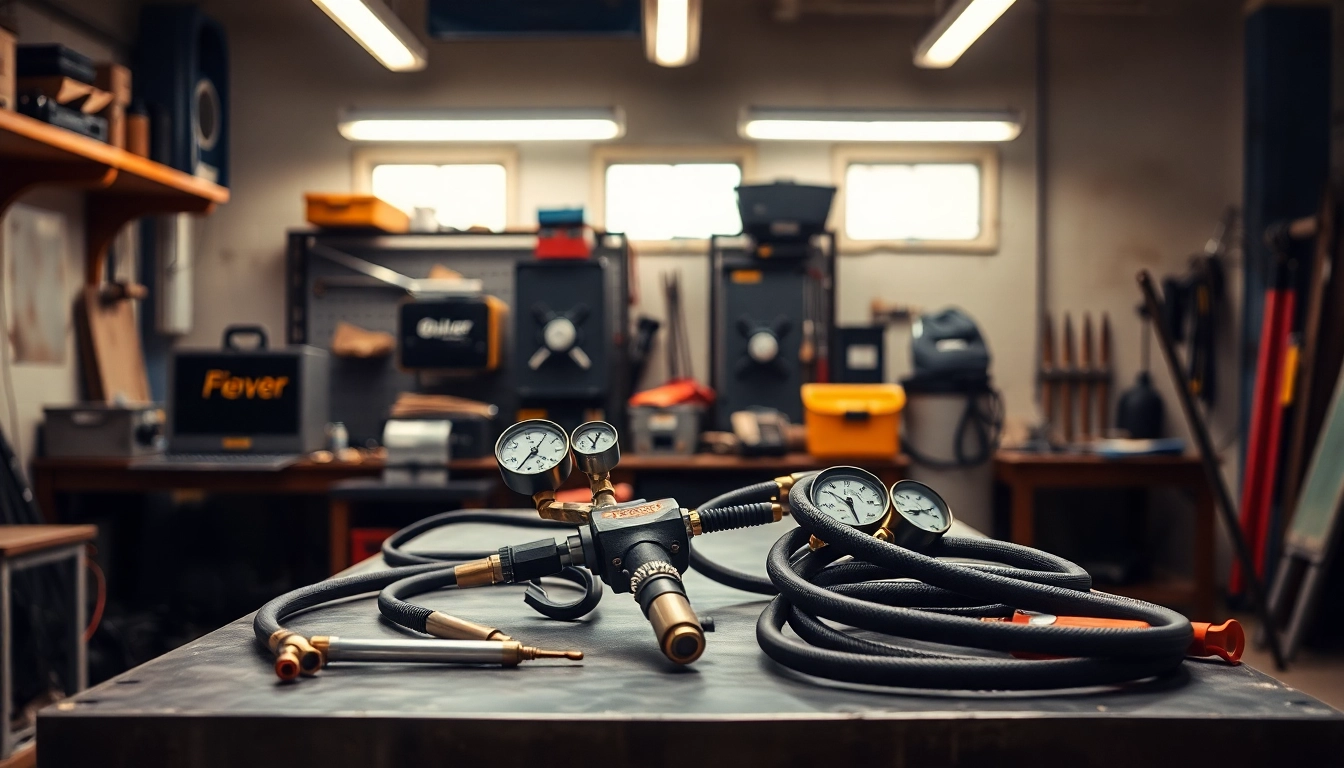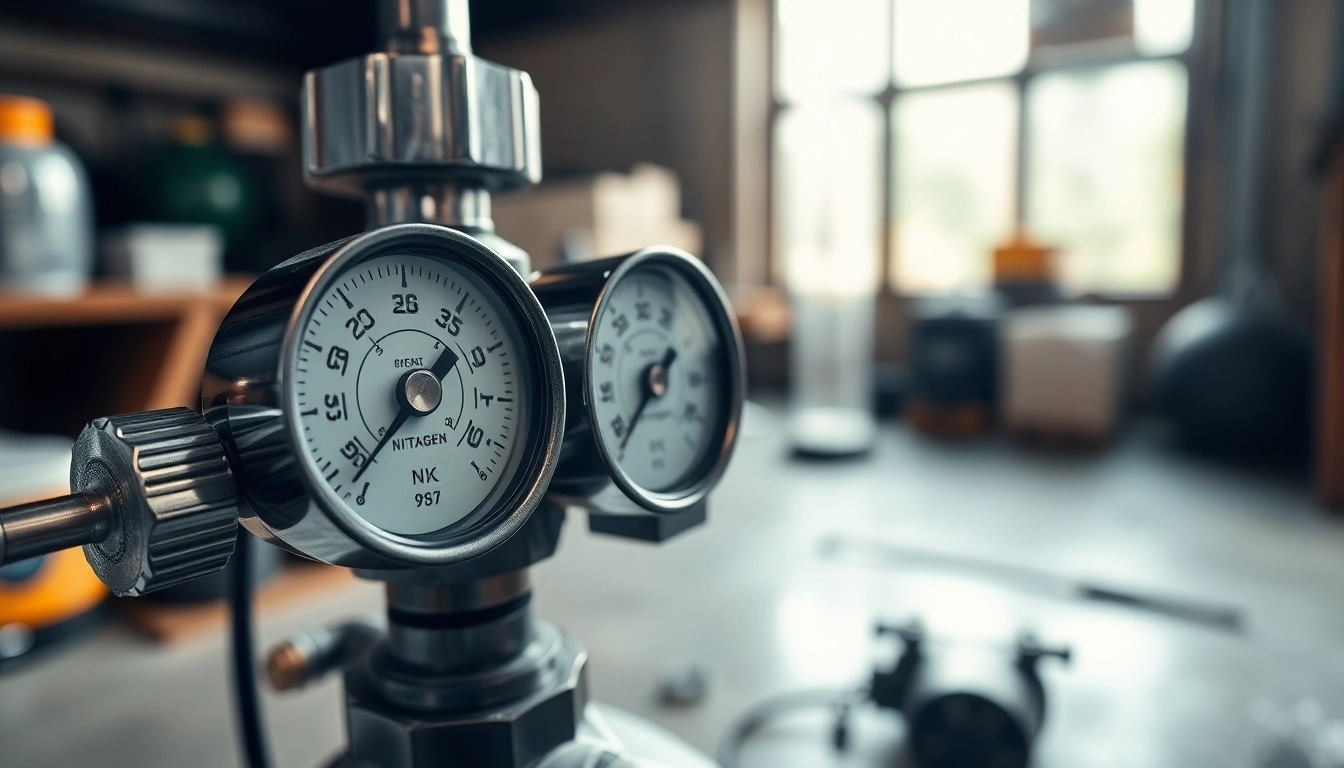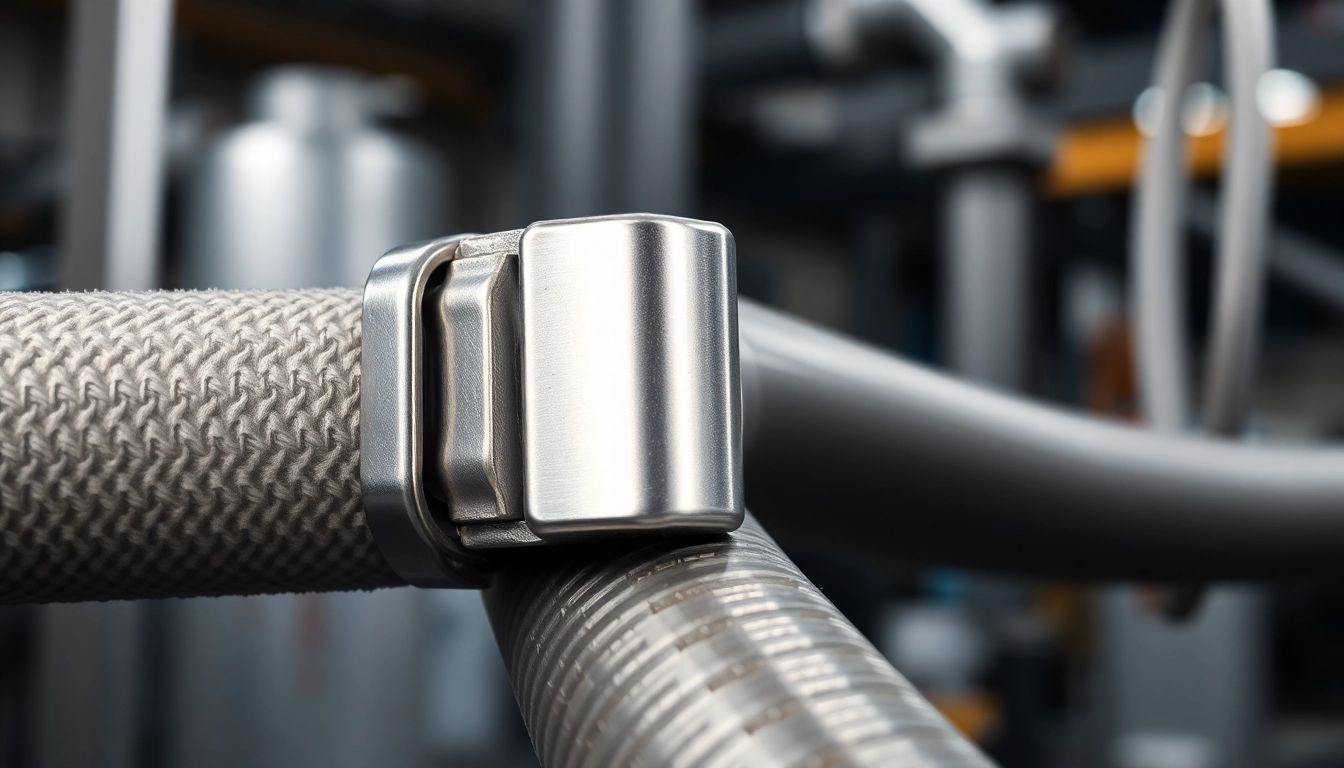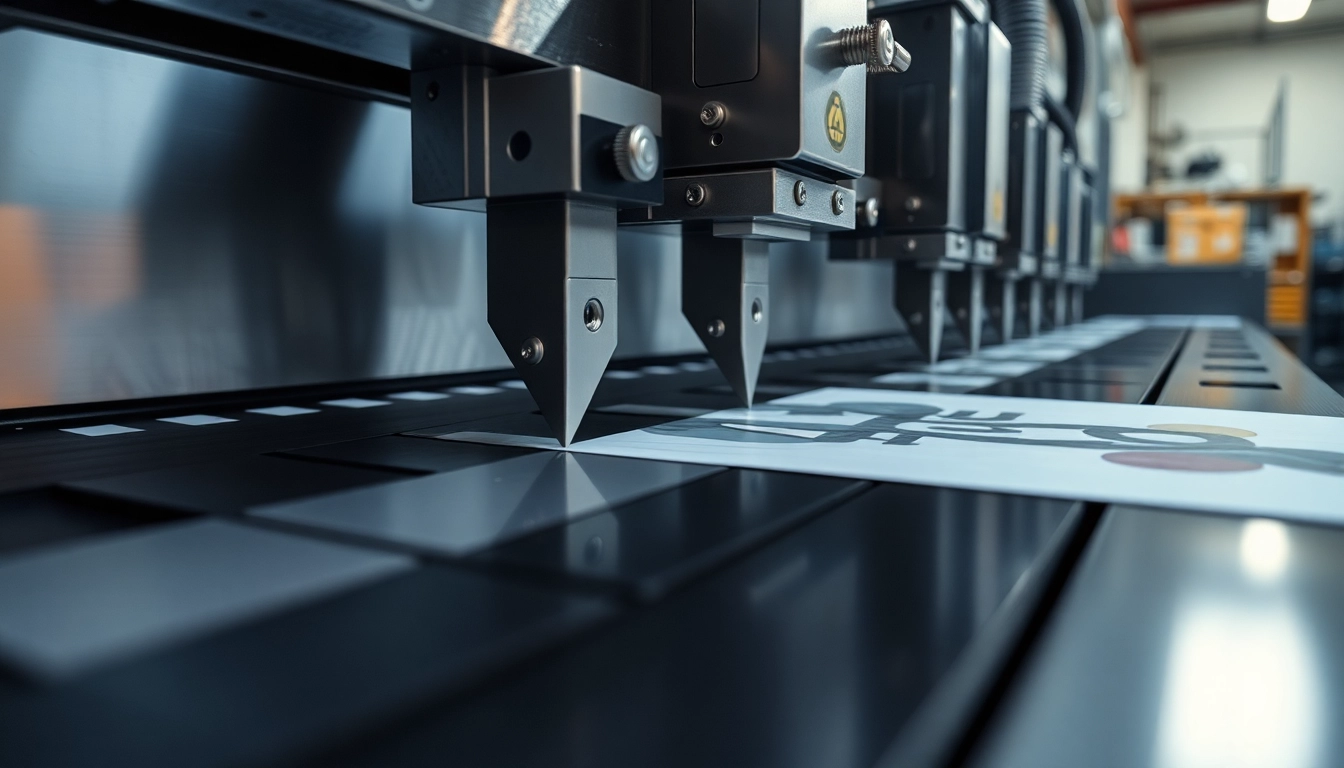The Basics of Oxy Gas Welding Kits
What is an Oxy Gas Welding Kit?
An oxy gas welding kit is an essential assembly of tools designed for welding, cutting, and brazing ferrous and non-ferrous metals using the heat from a flame produced by combining oxygen and acetylene gases. When ignited, this mixture produces a very high-temperature flame capable of melting metal. This simplicity and versatility make oxy gas welding a popular choice in various applications, from metal fabrication and repair to intricate artistic work.
In addition to its widespread use in professional settings, the oxy gas welding kit is also favored by hobbyists and DIY enthusiasts. Its portability and the availability of various sized kits cater to a broad range of users. If you’re considering entering the world of welding or conducting projects that require metalworking, understanding the components and safe usage practices of an oxy gas welding kit is critical.
Key Components of an Oxy Gas Welding Kit
A standard oxy gas welding kit comprises several key components, each of which plays a crucial role in the welding process:
- Welding Torch: The primary instrument used to deliver the mixed gas and produce the flame. It typically includes a handle and adjustable nozzle to control the flame size and intensity.
- Gas Cylinders: These are pressurized tanks that hold the gases — typically one cylinder for oxygen and another for acetylene. The tanks are built to withstand high pressures and must be handled with care.
- Regulators: These devices attach to the gas cylinders and control the flow of gas to the torch, ensuring a constant and safe pressure. They are crucial for efficient and effective welding.
- Hoses: Flexible tubes that connect the regulators to the welding torch. They must be durable and capable of withstanding the gases and pressures they carry.
- Safety Goggles: Protective eyewear essential for shielding your eyes from the bright light and sparks produced during welding.
- Cutting Attachment: An accessory that can be added to the torch, allowing for cutting metal as well as welding.
Safety Precautions When Using Oxy Gas Welding Kits
Safety should always be the top priority when using an oxy gas welding kit. Here are critical safety precautions to follow:
- Proper Training: Ensure that anyone using the equipment has received adequate training in oxy-fuel welding techniques and safety practices.
- Personal Protective Equipment (PPE): Always wear appropriate welding goggles, gloves, and flame-resistant clothing to protect against sparks and heat.
- Ventilation: Use the kit in a well-ventilated area to avoid the accumulation of harmful fumes and gases.
- Check Equipment: Regularly inspect hoses, cylinders, and regulators for damage or leaks before use.
- Secure Cylinders: Always secure gas cylinders in an upright position to prevent them from falling or being knocked over.
- Avoid Flammable Materials: Keep the working area free from flammable materials and have a fire extinguisher readily available.
Choosing the Right Oxy Gas Welding Kit
Factors to Consider: Size, Weight, and Portability
When selecting the right oxy gas welding kit, consider the following factors:
- Size: Smaller kits are easier to transport, making them ideal for hobbyists or those who require flexibility in their workspace. However, larger, more comprehensive kits may be necessary for industrial or heavy-duty tasks.
- Weight: Choose a lightweight kit if portability is essential; heavier kits provide more capabilities but can be cumbersome.
- Portability: Assess how often you will be moving the kit. If you need to take it to different job sites, look for kits with wheels or carrying cases for ease of transport.
Comparing Prices: Low-End vs. Professional Kits
The market offers a broad spectrum of oxy gas welding kits at varying price points. Low-end kits cater to beginners or light-duty applications, typically offering essential components at an affordable cost. Professional-grade kits, on the other hand, include advanced features, larger gas cylinders, and higher quality materials, allowing for more intensive usage. When comparing prices, consider the following factors:
- Component Quality: Higher prices often reflect better materials and build quality, which can enhance safety and performance.
- Brand Reputation: Renowned brands may have higher price tags but often come with better customer support and warranties.
- Included Accessories: Check what additional tools and accessories are included in the kit; a higher upfront cost can be justified if it includes valuable additions.
Top Brands in Oxy Gas Welding Kits
Some reputable brands in the market for oxy gas welding kits include:
- Victor: Known for its high-quality and durable welding equipment with a range of product offerings suitable for both professionals and hobbyists.
- Harris: Offers a wide variety of welding and cutting torch kits, known for innovation and reliability.
- Lincoln Electric: Renowned for its extensive selection of welding machines, including oxy gas welding kits tailored for various applications.
- Matheson: Offers kits suitable for professional and general use, known for their robust build quality and performance.
- Unimig: Provides affordable options for beginners and skilled welders alike, focusing on performance without breaking the bank.
Operating an Oxy Gas Welding Kit
Setting Up Your Oxy Gas Welding Kit
Setting up your oxy gas welding kit requires attention to detail to ensure safety and efficiency:
- Place the Gas Cylinders Securely: Ensure they are upright and secured. They should be positioned away from flammable materials.
- Attach the Regulators: Connect the regulators to the respective gas cylinders, taking care to follow manufacturer instructions to avoid cross-threading.
- Connect the Hoses: Attach the hoses to the regulators and the cutting torch, ensuring that each connection is tight and leak-free.
- Perform Leak Tests: Before igniting the torch, conduct a leak test with soapy water on all connections. Look for bubbles, indicating leaks.
- Adjust Pressure Settings: Set the correct pressure on the regulators for oxygen and acetylene, using manufacturer’s specifications as a guide.
- Ignite the Torch: Following proper procedures, light the torch using a flint spark lighter or similar tool, adjusting the flame as needed.
Basic Techniques for Oxy Gas Welding
Once your oxy gas welding kit is set up, familiarity with basic welding techniques is essential:
- Joint Preparation: Ensure metal surfaces are clean and properly aligned before welding.
- Controlling the Flame: Learn to adjust the flame’s neutral state, where the inner cone is bright and pointed. A neutral flame is crucial for most welding tasks.
- Welding Angle: Hold the torch at a 45-degree angle and maintain a steady hand while moving along the joint.
- Filler Rod Use: For welding, feed the filler rod into the molten puddle, allowing it to melt and join with the base metals.
- Cooling Down: Allow the welded metal to cool slowly to prevent warping; avoid quenching unless necessary for material properties.
Common Errors to Avoid During Oxy Gas Welding
Even experienced welders can make mistakes. Here are common errors to avoid:
- Inconsistent Welder Speed: Moving too fast or too slow can result in weak welds; practice maintaining a consistent speed relative to the welding process.
- Overheating: Applying too much heat can warp metals and lead to burn-through. Be cautious and apply heat gradually.
- Wrong Flame Type: Using an acetylene-rich or oxygen-rich flame for specific tasks can weaken the weld or lead to oxidation. Stick to a neutral flame for most applications.
- Failing to Clean Joints: Rusty, dirty, or oily surfaces can hinder proper adhesion; always clean joints before welding.
- Neglecting Safety Equipment: Forgetting to wear protective gear can lead to injuries; make this a part of your usual operating process.
Applications of Oxy Gas Welding Kits
Industries That Rely on Oxy Gas Welding
Oxy gas welding is widely used across various industries, including:
- Manufacturing: Employed in the production of metal structures and components, from automotive parts to heavy machinery.
- Construction: Utilized for joining and cutting steel beams, piping, and other structural components.
- Repair Services: A go-to method for repairing damaged metal products, equipment, and vehicles.
- Artistic Metalworking: Sculptors and artists use oxy gas welding for creating metal sculptures and art installations.
- Shipbuilding: Essential in the fabrication and repair of ships and marine vessels.
Project Ideas Using Oxy Gas Welding Kits
If you’re looking for inspiration for your next project, consider these ideas:
- Metal Sculptures: Create artistic representations using scrap metal, offering a unique expression of creativity.
- Furniture Fabrication: Design custom metal furniture pieces, from tables to chairs, incorporating personal style.
- Automotive Repairs: Tackle repairs and modifications on vehicles, including exhaust systems and frames.
- Home Decor Items: Craft metal wall art, candle holders, or decorative hooks to personalize your space.
- Garden Equipment: Build yard tools or decorative gates, blending function with aesthetic appeal.
Advantages of Oxy Gas Welding in Skilled Trades
The advantages of using oxy gas welding in skilled trades are numerous:
- Versatility: Oxy gas welding can be used for a variety of materials, including steel, aluminum, and brass, making it suitable for diverse applications.
- Cost-Effective: Compared to some modern welding methods, oxy gas welding equipment can be more affordable and easier to maintain.
- Accessibility: Training and learning curves tend to be less steep, making it accessible for both professionals and amateurs.
- Reliable Heat: The ability to produce high-temperature flames allows for effective melting and joining of metals.
- Highly Portable: Oxy gas welding kits can be transported easily, allowing for work in various environments.
Maintenance and Care for Your Oxy Gas Welding Kit
Regular Maintenance Tips
To ensure the long life of your oxy gas welding kit, follow these maintenance tips:
- Inspect Regularly: Check hoses for cracks or leaks and ensure all fittings are secure.
- Clean the Torch: After each use, clean the torch tip and nozzle to prevent clogs.
- Store Properly: Keep your kit in a cool, dry place, ideally in a designated carrying case to prevent damage.
- Check Gas Levels: Regularly check and monitor gas levels to prevent running out unexpectedly during projects.
Storage Solutions for Oxy Gas Welding Kits
Storing your oxy gas welding kit properly is essential for safety and longevity:
- Use a Hard Case: Invest in a sturdy hard case specifically designed for welding kits to prevent damage or accidental opening.
- Keep in a Designated Area: Always store your kit in a well-ventilated area away from flammable materials and heat sources.
- Label Gas Cylinders: Clearly label your gas cylinders and store them upright, secured to avoid accidental falls.
- Avoid Overloading: Do not overload your storage area with excessive weight that may damage delicate components.
When to Replace Components in Your Kit
Knowing when to replace components of your oxy gas welding kit is crucial to maintaining peak performance:
- Worn Hoses: Replace hoses showing signs of wear, such as fraying or cracking, to prevent leaks.
- Damaged Regulators: If you notice fluctuating pressures or leaks, replace regulators to ensure safe operation.
- Old Cylinders: Check the expiration date on gas cylinders and replace them as needed, following local regulations.
- Contaminated Equipment: If contaminants are found in the hoses or torch, consider replacing them to prevent welding defects.



